Konkobar (Kangavar)
Q720604Konkobar: ancient (Parthian?) sanctuary, perhaps dedicated to Anahita, modern Kangavar in Iran.
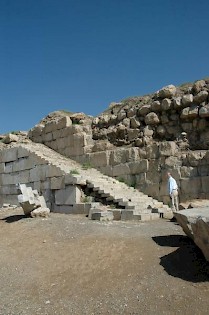
The sanctuary at Kangavar - according to Isidore of Charax once known as Konkobar - was located along the road from Ecbatana (modern Hamadan) to Behistun and the plains of Mesopotamia. The road crosses the Zagros Mountains, but the valleys are usually wide, fertile, and sometimes even wet. Reportedly, there are three wells near the Kangavar shrine, which has led to the theory that the sanctuary was dedicated to Anahita, the Iranian goddess of water. This has become a widely-accepted theory, but in fact, we would have expected that Isidore would have called the site a Nymphaeum, a sanctuary dedicated to the nymphs, while in fact he refers to a shrine of the hunting goddess Artemis.note Several insciptions, however, refer to the two goddesses as one and the same, so the Artemis of Isidore can indeed have been an Anahita.
There are no archaeological remains predating the Parthian age (although the site may be identical to the Kunduruš mentioned in the Behistun Inscription), and it probably dates back to the second half of the second century BCE, after the Parthians had conquered Media. Later dates, to the Sasanian period, have also been proposed.
The sanctuary is essentially a low, natural hill that has been converted into a square platform that was the basis for a higher, smaller platform, about 3½ meters high and also surrounded by a line of columns. A third terrace was occupied by the sanctuary itself: a square building that contained an altar and a square cultic room. The complex can be compared to a low ziggurat.
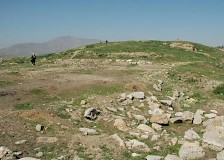
The complex was surrounded by a portico. The square platform measured about 220 x 220 meters (the northern side has not been excavated because there is a village with a mosque that continues the cultic function of this site). The terrace was about 5 meters high and could be reached by a double staircase that appears to have been inspired by the Stairs of All Nations in Persepolis.
To the east of the sanctuary, several Parthian tombs were discovered that contained coffins.
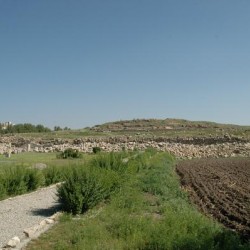 Kangavar, General view |
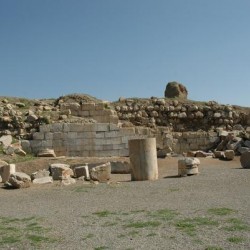 Kangavar, Portico |
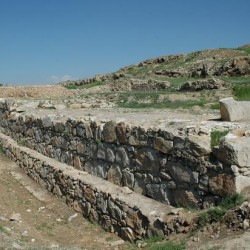 Kangavar, Foundations of a wall |
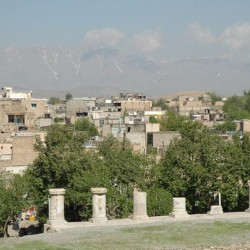 Kangavar, Back |